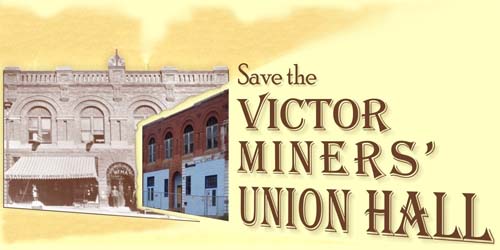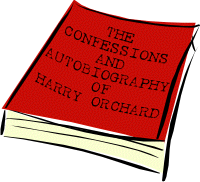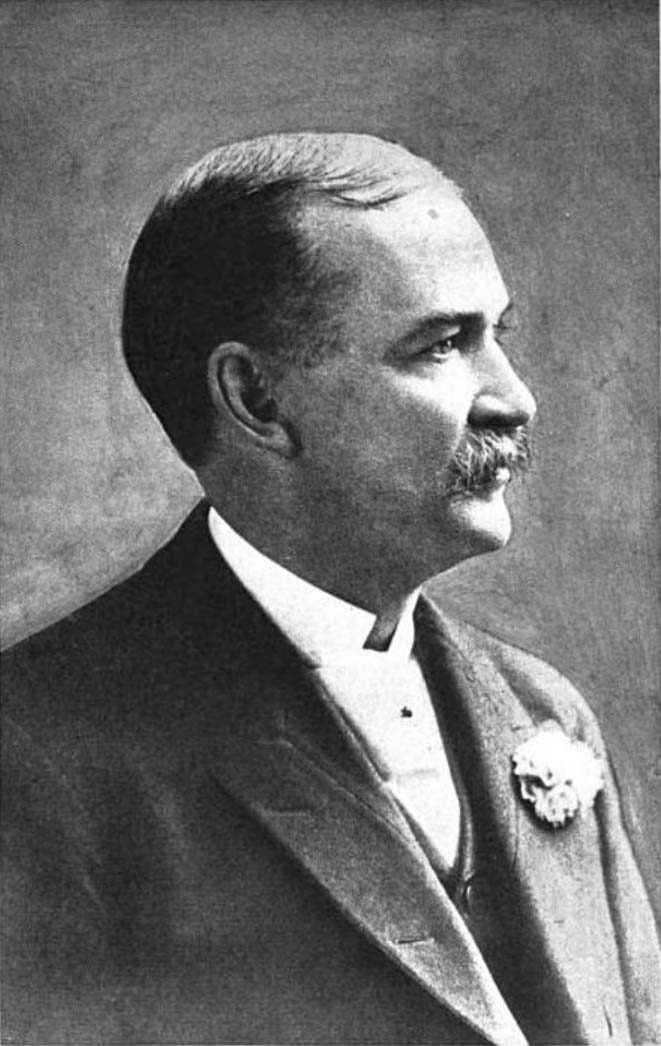 |
Victor
|
THE CONFESSIONS AND AUTOBIOGRAPHY
OF
HARRY ORCHARD

CHAPTER NINE
HOW WE TRIED TO ASSASSINATE
GOVERNOR PEABODY
ABOUT this time a mob and the militia ran some more of the union men out of Telluride, Col., in the night, and forbade them to return on pain of death. Mover sent for me to come to Denver, so I got ready and went. I met Moyer, Haywood, and Pettibone at Federation headquarters, and they wanted me to go down to the San Juan district with Moyer. They had two pump shot-guns, sawed off so they would go in our grips when they were taken down, and plenty of shells loaded with buck-shot. The reason for this was some one had told Moyer or sent him word if they caught him they would use him as they had the United Mine Workers' officers. Some of the latter had been taken off a train and beaten up and nearly killed. They laid this to the deputies the mine operators had employed.
The next night Moyer and I started for Montrose, where they had sent John Murphy, the Federation attorney, to get an injunction from Judge Stevens against the militia and citizens of Telluride to compel them to let the union miners return to their homes peaceably and not to interfere with them. We had three six-shooters, and two shot-guns in our grips, which we left unfastened in the seats in front of us, and we sat near the middle of the car; but no one troubled us. We arrived at Montrose and met Mr. Murphy, and he had the injunction all ready. We went on to Ouray, where most of the men were that had been deported, and the next day Moyer sent a telegram to Governor Peabody informing him of the injunction, and wanted to know if these men would have the protection of the militia if they returned peaceably to their homes, and he got an answer that all law-abiding citizens would be protected. Moyer said when he sent his telegram to the governor, that he had promised himself that he would never ask him for anything again, and he hated to do it, but this would be the last time. Moyer sent a few men back on the train the next morning, but they were met at a station some distance from Telluride, and forced off the train by militia and armed men, and threatened with death if they attempted to come into town. Sherman Bell, the adjutant-general, had arrived in Telluride, and martial law was declared, and Bell disregarded the order of the court in regard to the injunction.
After these men were sent back from Telluride, Mr. Moyer was angrier than ever, and he began to advise the men that they could not expect any protection from the State, and the only way was to take the law in their own hands, and go back to Telluride in a body and clean out the town. There were some methods discussed as to the best way to proceed. The first thing that we thought necessary was to get concentrated at the most convenient place, and get what arms and ammunition and other material we would need. We also spoke of filling beer-kegs with dynamite, and attaching a time-fuse, and rolling them down the mountainside into Telluride, as the town was in a cañon with high mountains on either side. Another plan spoken of by Moyer was to poison the reservoir where they got their water for Telluride with cyanide of potassium. This is easy to get around the mills where they use the cyanide process, and of course it is deadly poison and kills any one taking the least particle of it instantly. But Moyer only started to carry out the first of these plans when he was arrested.
After Bell disregarded the injunction, Moyer sent over to Silverton, which is thirty miles from Ouray, for Frank Schmelzer, the president of the San Juan district union. He wanted to confer with him about what to do with these men who were deported, as there were about a hundred of them stopping at the hotel at Ouray, and paying about $1 a day there, and he said the Federation could not afford that. Mr. Schmelzer came over the next day, and they talked the situation over. There were some more of these deported men over at Silverton. The final outcome of the conference was that they decided to lease one or more of the idle mines up at Red Mountain. This is about half-way between Ouray and Silverton on the divide, and not far from Telluride, I think less than twenty miles. Another man came down from Red Mountain with Schmelzer; his name was Tom Taylor. He had a partner at Red Mountain, and he said there were some large boarding and lodging-houses there, and he thought there would be no trouble in renting them, as almost everything was silver mines around there and they were closed down on account of the low price of silver. The object of getting this out-of-the-way place was to have some place to concentrate the men and keep them together, and this place was just where they wanted them, and the lease was all a bluff. The real object was to send these men up there and arm them all, get a car or two of provisions, and send all the outlaws they could get hold of up there, too.
They were going to try to get Vincent St. John to go up there and drill these men and be their leader, as they all knew him, and it was said they would do anything he told them or follow him any place. These men were mostly all foreigners—Austrians, Finns, and Italians. They thought if they could get enough men up here in this out-of-the-way place, and have them well armed, and keep them there until the snow got settled in the spring so they could walk on it, some night they could march them over the hill to Telluride and clean out the town. This was the plan, but it was not told except to a very few, and they were well satisfied with it. If we had had another day these arrangements would have been finished, and perhaps we would have been away from there.
But the morning that we might have finished up and left later in the day, before we got up, the sheriff rapped at the door and wanted to see Moyer. I was sleeping with Moyer, and we got up and dressed, and when we went out the sheriff arrested him. He said they had wired him from Telluride to hold Moyer, and that the sheriff from San Miguel County was on his way with a warrant. Moyer wired his attorneys at Denver and wanted to know if the sheriff at Ouray had any right to hold him without a warrant. I think they told him he had; anyway, he did hold him, and about noon the sheriff and two deputies arrived and took him to Telluride. Moyer had given me some papers and his six-shooter before the sheriff from Telluride arrived, and the Ouray sheriff did not search him or lock him up, but let him stay in his office. The charge they arrested him on was desecration of the American flag. The Federation had sent out by the thousands posters imitating the American flag, with advertising on them. They only arrested Moyer on this as an excuse. They took him to Telluride, and he was released on bail, but the militia re-arrested him right away.
I left Ouray that night and went to Silverton with Schmelzer to escape arrest, and Moyer telephoned me from Telluride in a day or so, and wanted me to fetch his things and meet him at Durango, but before we got through talking they cut us off. He was telephoning me just after he was let out on bonds, and while he was talking they cut off the connection, and the militia arrested him right afterward and held him for over three months. That was the last I saw of him for nearly a year.
I stayed at Silverton a few days, and then went back to Denver and reported to Haywood. The lawyers from Denver had gone to Telluride in the mean time, but they could not get Moyer out, as the militia held him under military necessity. A few days after he was arrested, Sheriff Rutan of Telluride came to Denver to arrest Haywood on the same charge, but Haywood blocked his plans by getting a friend in Denver to swear out a warrant on the same charge, and a justice in Denver that was friendly to him put him in the custody of the deputy sheriff, who stayed with him all the time; and he had his case continued from time to time.
Pettibone and Haywood decided we ought to teach them a lesson for sending Rutan up there, and Pettibone and I were laying for Rutan the evening he went to take the train in Denver for home. We waited in an alley off Seventeenth Street, just before you got to the depot, and Pettibone was going to hit him with some brass knuckles, and we were going to drag him into the alley and finish him. But he had seven men with him on his way to the depot, and we couldn't get him.
Haywood and Pettibone were pretty warm under the collar about this time. They said they could not get any justice in the courts, that Peabody was holding Moyer down there under martial law, and that he had no right to, and the only way they knew of to get any justice was to take the law into their own hands and put Peabody out of business. So they decided then they wanted me to get away with the governor. Pettibone told me where he lived, and they wanted me to take a look around his residence and see what the chances would be to get away with him. I took a look around there, and told him I thought a man could lay alongside a stone fence in a vacant lot that was on one side of his house, and shoot him with buck-shot when he came home at night. I went and sat around the capitol building and read until I saw him, so I would know him and learn his habits, and I told Haywood I thought he could be gotten all right, but that I ought to have some one to help me. It is better to have two men on a job of this kind, so that one can watch, and of course two men could hold up the police better than one, if you had to. Besides, you get half crazy thinking of a job of this kind, when one man is alone.
Haywood said Steve Adams was the best man he knew of to go in a job of that kind, only he said he was so well known. But we thought if he came down there in the city, and did not go around in the daytime much, he might not be known. So I left there and went back to Cripple Creek, where Steve lived. I had never had anything to do with him at this time, and was only slightly acquainted with him. I went and saw him, and told him what they wanted, and he said he was ready for any old thing.
I made arrangements with Adams to come to Denver in a few days, and I went right back to Denver, and told Haywood and Pettibone that Adams would be there soon. I kept a watch around the governor's place, and learned all I could about his habits, and learned he usually came home in a hack quite late at night. Adams came down to Denver in a few days, and Haywood gave him money to get some new clothes and fix himself up some, and we got rooms out of the main part of the city a little, and each got a sawed-off shot-gun from Pettibone, and kept a lookout for the governor. We had a place fixed in Pettibone's lot back of the house to hide our shotguns after we had shot the governor, if we got a chance, as Pettibone lived only a short distance from the governor and there was a dark street we could take part of the way to get there, and Pettibone was to take the guns and clean them up and put them away.
We worked on this for some time, and never happened to catch the governor coming home at night, and we conceived the idea of planting a bomb under the edge of the sidewalk, and stretching a fine wire across some vacant lots that were there, and hiding it in the grass, and setting it off by pulling the cork out of a bottle filled with acid. When the acid touched the giant-caps it would explode the bomb. We expected to pull this wire when Governor Peabody came along there in the morning on his way to the State-house. It was his habit to walk from his residence to the State-house every morning between nine and ten o'clock. Adams went up to a little mining-camp not far from Denver to a friend he knew, and that knew about some of these outrages, and got about fifty pounds of powder and brought it back in a grip. He took it over to Pettibone's store, made a box and put the powder into it, and fixed a lid so we could bury it and leave a wire out of the ground a little, so we could attach another wire to it.

JAMES H. PEABODY
Ex-Governor of Colorado, whom Orchard repeatedly attempted to assassinate.
About the time we got this ready, and were going to bury it under the sidewalk some dark night, the executive board of the Western Federation of Miners met to make arrangements for the annual convention. It was now some time in May. The board were gathered in Denver and were going over the books, as the custom is, just before the convention, and Haywood stopped us from using a bomb at this time, as he thought it might be laid to some of the executive board.
We had seen Mr. Peabody coming home late at night in a hack, and one night we had our pump shot-guns all ready, and waited across the street opposite in a yard under some trees, and when we saw his carriage coming, we got out on the street, and as the carriage slowed up we followed up behind it, and were only about thirty or forty feet behind it when they got out. We had our guns leveled at them to shoot as soon as we saw the governor. We had watched so we could tell him, and it was also quite light there. But there were only three women got out, and the carriage began to turn round, and we put our guns down quick and got on the sidewalk and started down the street. The carriage driver let his horses walk and kept looking at us, and the women kept watching us too, and stood on the porch as far as we could see them. We took the first cross street and got out of sight as quickly as possible. We noticed the next day in the papers that the governor had gone out to Fort Logan with some military men and did not return till the next day.
However, Haywood said he had been studying up, and had come to the conclusion that Dave Moffat was behind the whole thing, and that Governor Peabody was often closeted with him in Moffat's private office, and he said Mr. Moffat had been mixed up in the Leadville strike some years ago, and he wanted us to leave off Peabody and see if we could not get Moffat. We went to watching Mr. Moffat's habits, but we could not get much track of him. We knew where his residence was, but we could never see him coming or going from it, and we worked along on this for some time without ever being able to see Mr. Moffat around his house. Haywood would tell us when he was in the city, as he did his banking at Mr. Moffat's bank, and was there every day, and while he said he hardly ever saw Mr. Moffat, he could always tell when he was there, as he always kept a guard at the door of his private office. Haywood furnished us with money all this time.
NEXT: The Shooting Of Lyte Gregory Before The Convention